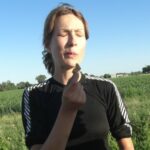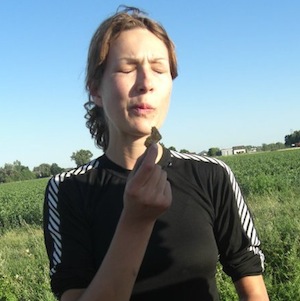Lewis Carroll paints a picture of a world where very little makes sense; an adult wonderland seen through a child’s eyes. Yet, who is to say that what we see and the behaviours that we adopt really make sense to others?
I was reading (not Alice in Wonderland this time) an interesting paper recently that suggested that when natural ambiguities exist (e.g. distance), we see desirable objects as closer than less desirable ones [1]. In a revamp of the New Look theory of the 40s and 50s, the authors embraced the idea that the perceptions we have of the world around us are shaped by what we need from that environment; accordingly we assess our own resources, choosing either to expend or reserve, in order to fulfil these needs successfully. In other words, what we see and how we act is related to maintaining the delicate balancing act of survival.
When our survival is threatened, such as when we perceive pain, our body’s balance or homeostasis is disrupted [2]; in turn our needs are also altered. For example, if we manage to burn ourselves trying to reach the tin of brownies at the back of the oven without a glove (not recommended), the need to stop the burning pain becomes greater than the need to reach the brownies. This need is then reflected in our behaviour, perhaps a dash to the cold tap or the freezer. The interesting thing, following Balcetis and Dunning’s idea, is that perhaps in order to successfully carry out these behaviours, we subconsciously analyse our environment in an advantageous way: seeing what we need as closer and more accessible than the things we don’t.
The impact of our internal state, the homeostasis of our body, seems not only to direct our behaviour but to have an effect on the way our senses are interpreted even before they reach our awareness. Pain is just one example that could impact the way we perceive our environment. With so many factors that can alter our needs on a daily, hourly or even minute by minute basis, it is unsurprising that we see certain things in a pretty unique way. It made me think that we all live in a bit of a Wonderland and that perhaps it is not the similarities that tie the raven and writing desk together but the way in which they are different that holds the answer.
About Abby Tabor
 Abby has a very posh English accent, and clearly doesn’t like granola bars. She is working as a Research Assistant with the UniSA BiM team. One of the projects Abby is currently working on is looking at whether inflicting acute pain alters perception of distance, the other is looking at the effect of alcohol on sensory training.
Abby has a very posh English accent, and clearly doesn’t like granola bars. She is working as a Research Assistant with the UniSA BiM team. One of the projects Abby is currently working on is looking at whether inflicting acute pain alters perception of distance, the other is looking at the effect of alcohol on sensory training.
Here is Abby in person talking about her projects.
References
[1] Balcetis E, & Dunning D (2010). Wishful seeing: more desired objects are seen as closer. Psychological science, 21 (1), 147-52 PMID: 20424036
[2] Craig AD (2003). A new view of pain as a homeostatic emotion. Trends in neurosciences, 26 (6), 303-7 PMID: 12798599




